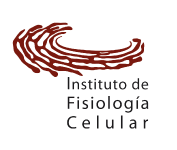Activation of Hes1 and Msx1 in transgenic mouse embryonic stem cells increases differentiation into neural crest derivatives
Méndez-Maldonado, K., Vega-López, G., Caballero-Chacón, S., Aybar, M., & Velasco, I. (2018). Activation of Hes1 and Msx1 in Transgenic Mouse Embryonic Stem Cells Increases Differentiation into Neural Crest Derivatives. International Journal of Molecular Sciences, 19(12), 4025. doi:10.3390/ijms19124025
The neural crest (NC) comprises a multipotent cell population that produces peripheral neurons, cartilage, and smooth muscle cells, among other phenotypes. The participation of and when expressed in mouse embryonic stem cells (mESCs) undergoing NC differentiation is unexplored. In this work, we generated stable mESCs transfected with constructs encoding chimeric proteins in which the ligand binding domain of glucocorticoid receptor (GR), which is translocated to the nucleus by dexamethasone addition, is fused to either (HGR) or (MGR), as well as double-transgenic cells (HGR+MGR). These lines continued to express pluripotency markers. Upon NC differentiation, all lines exhibited significantly decreased expression and upregulated , and expression, indicating NC commitment. Dexamethasone was added to induce nuclear translocation of the chimeric proteins. We found that transcripts were increased in MGR cells, whereas coactivation of HGR+MGR caused a significant increase in (α-) transcripts. Immunostaining showed that activation in HGR+MGR cells induced higher proportions of β-TUBULIN III⁺, α-SMA⁺ and COL2A1⁺ cells. These findings indicate that nuclear translocation of MSX-1, alone or in combination with HES-1, produce chondrocyte-like cells, and simultaneous activation of HES-1 and MSX-1 increases the generation of smooth muscle and neuronal cells.




